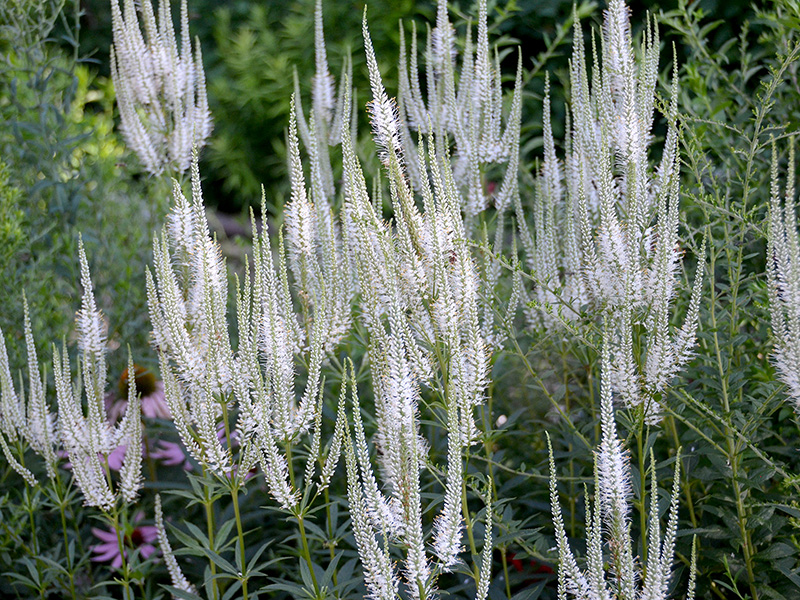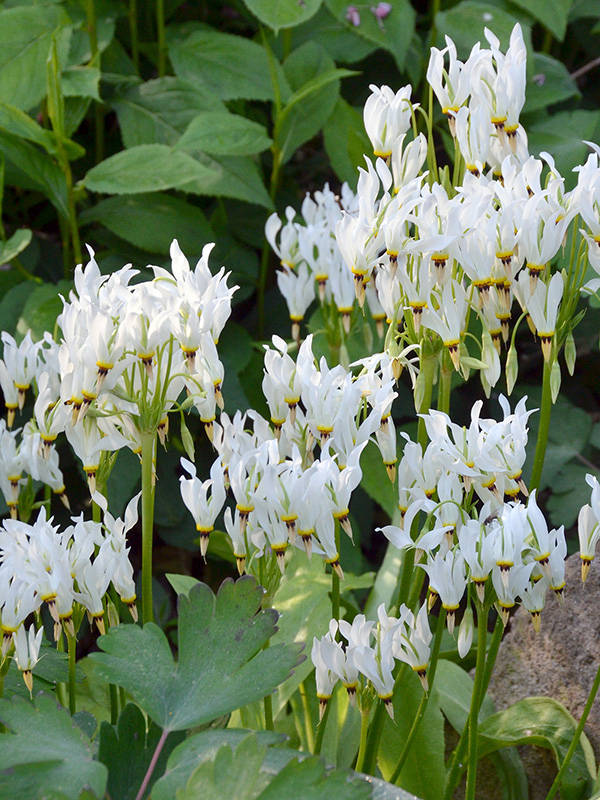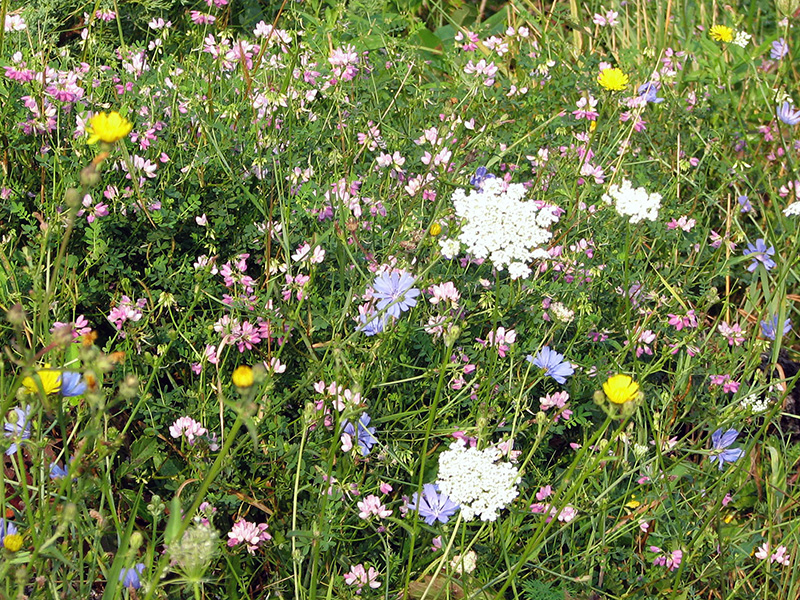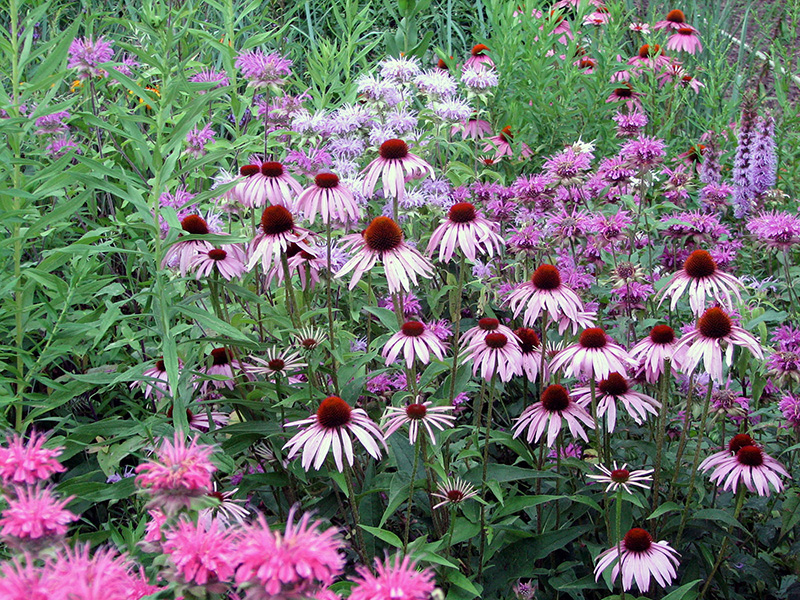Carolyn Summers, in her book Designing Gardens with Flora of the American East, points out that the term “wildflower” lends itself to misunderstanding. She makes a good point, and I guess I should call them “herbaceous plants” or “forbs.”
But since William Cullina in his book Wildflowers and Don Leopold in his book Native Plants of the Northeast both use the term “wildflowers,” I guess I will, too.

One of my favorite “wildflowers” is Culver’s root (Veronacastrum virginicum).
It’s a pollinator favorite, too!
Wildflowers or weeds?

Often when I mention native wildflowers, people wonder why I would want to plant weeds. This puzzled me.
When I think of native wildflowers, I think of all the beautiful wildflowers we grow, such as these shooting stars.
I finally realized that people think of “native” wildflowers as those plants you see by the side of the road. These weren’t intentionally planted and they grow by themselves, so people think these must be the native plants I’m talking about. The irony is that these roadside weeds are generally non-native plants!

We took this photo as we were walking down a town road to our local Wegmans store.
The queen Anne’s lace, chicory, and other common roadside plants are NOT native even though they’ve been here for hundreds of years, brought over by European settlers.
People are so familiar with them they may seem “native,” but a few hundred years isn’t a lot of time when you’re talking about a plant truly becoming a part of an ecosystem, establishing relationships with a whole community of plants and animals.
Native wildflowers

Here’s what native wildflowers can look like — not a weed patch at all!
They provide nectar for pollinators, but also seeds for birds once I got out of my old ornamental gardening habit of deadheading flowers as soon as they faded.
HERE is a list of the wildflowers we grow.
Resources
- The Xerces Society:
- Connecticut Botanical Society:
- Gallery of Connecticut wildflowers — A good reference for wildflowers, including photos NOTE: They aren’t all native, but it’s a convenient way to recognize plants you might see. In other words, I don’t endorse all the plants on the list!
- SUNY-ESF:
- Wildflower Restoration Project — Start your own wildflower restoration project in a post-agricultural forest
- Citizens for Lexington Conservation:
Reflections
It is, then, one of the beautiful accidents of nature that the color perception we humans developed evolved independently in birds and insects. If, like most mammals, they could only see shades of gray, think of how drab our world would be. No kaleidoscopic butterfly wings, bird feathers, or beetle carapaces, and worst of all — no luminous, magnificent, brightly decorated flowers.
~ Bill Cullina, Flowers with a touch of the blues
